Аушвиц, најголемиот концентрационен логор од времето на нацизмот, го симболизира хоророт на Холокаустот. Пред 70 години, нацистите принудија околу 60 илјади преживеани затвореници на „смртоносен марш“ додека војниците на Црвената Армија се доближуваше кон логорот.
A quarter of them died. When the Soviets liberated the camp on January 27th, 1945, only those the Germans had deemed too weak for the journey remained. Efforts to destroy the buildings, the gas chambers, and the ovens had to be abandoned due to the speed of the Soviet advance. So today, parts of Auschwitz are almost perfectly preserved – a crime scene for more than a million murders.
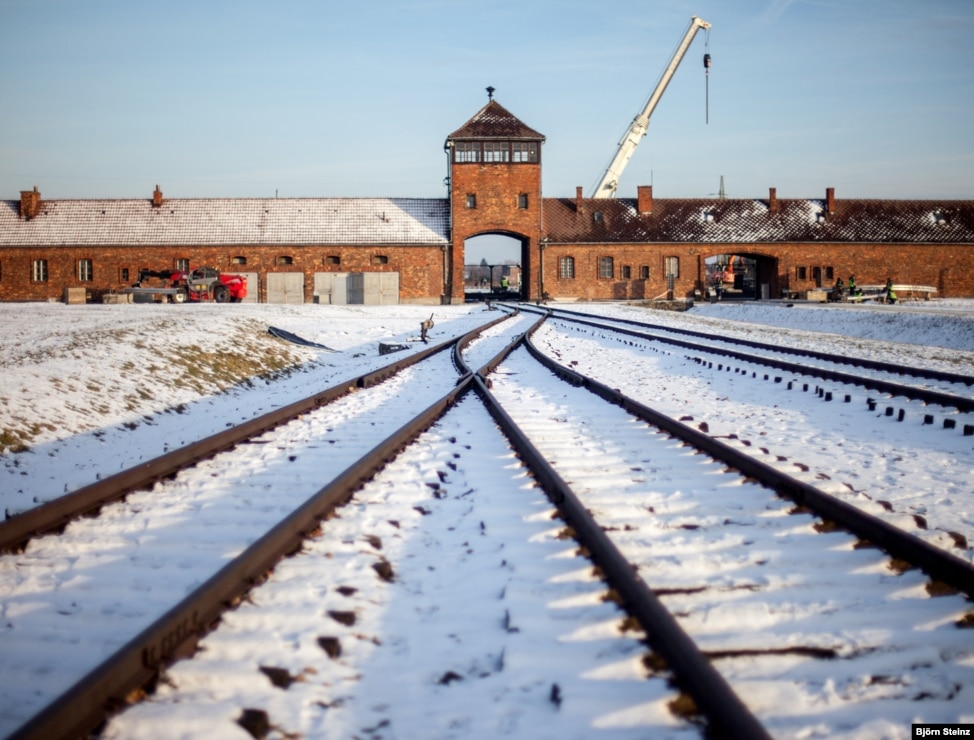
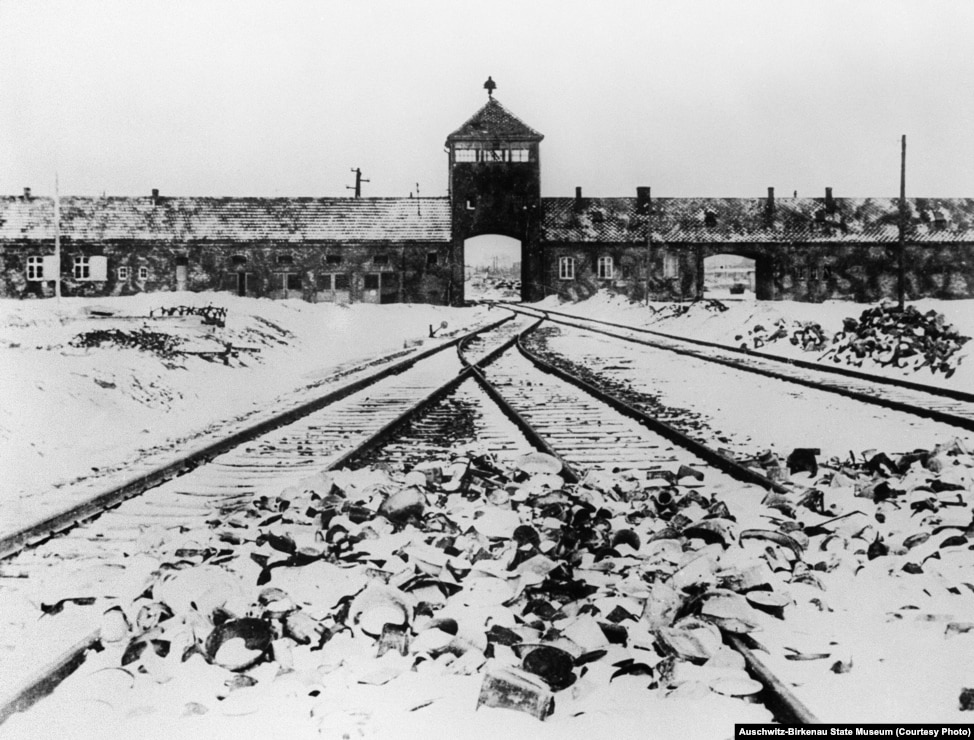
The main gate. The picture on the right was taken in January 1945, after the liberation of the camp. The scene today is almost identical. A crane is being used to prepare for events marking the 70th anniversary of the liberation.
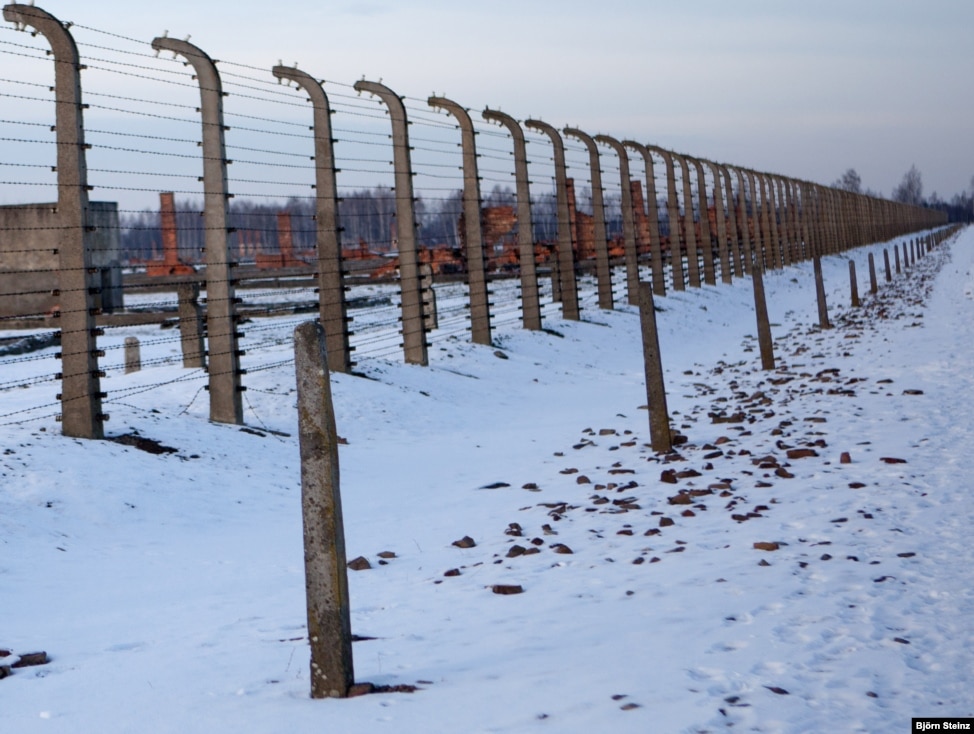
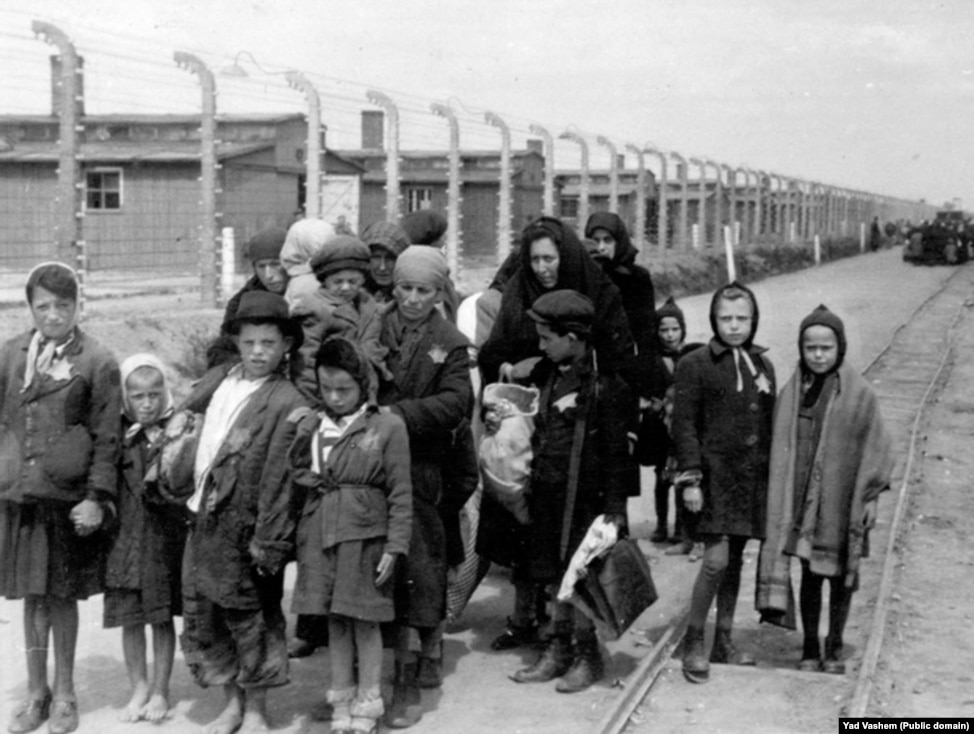
In the right hand picture, Jewish mothers and their children are seen walking to the gas chambers in May 1944. The wooden barracks of Birkenau camp, which was built as an extension to the main Auschwitz camp, can be seen behind them. These buildings were dismantled after the war, but the brick chimney stacks remain.
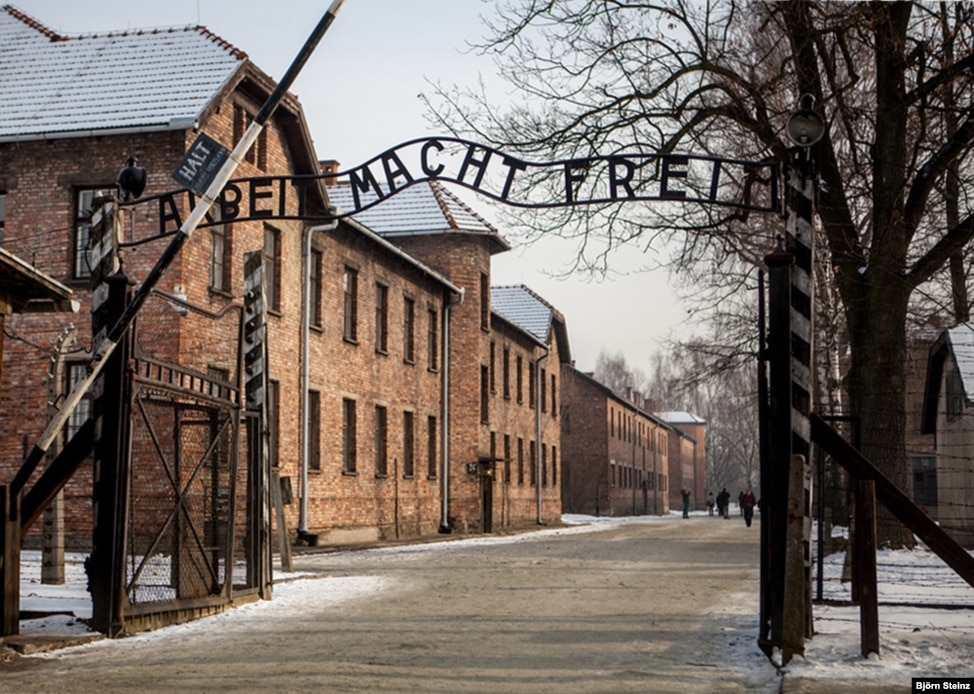
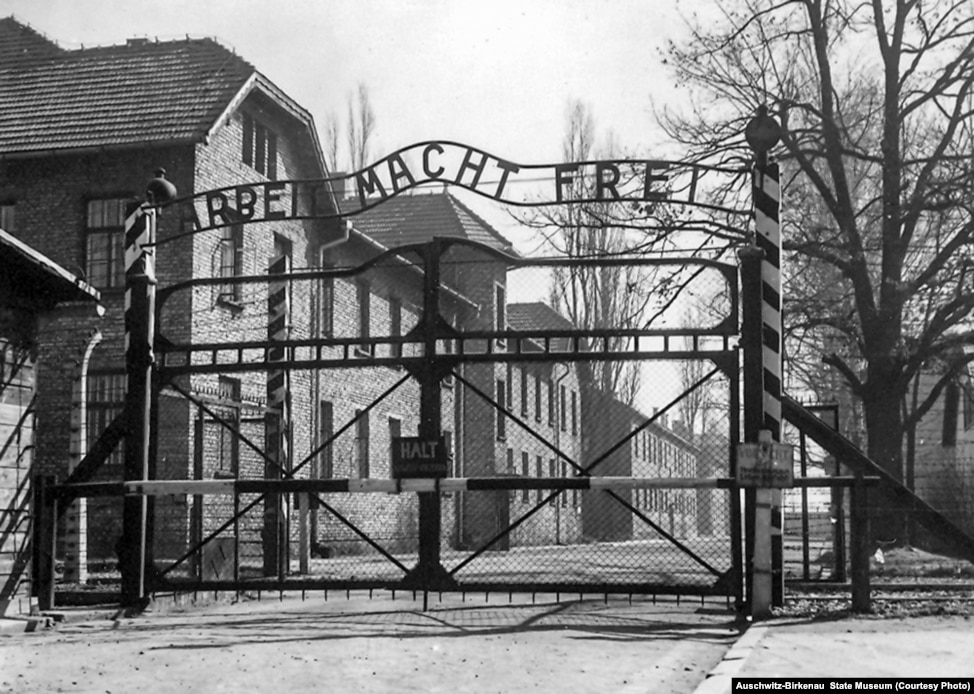
The main gate to Auschwitz I, the original camp, bears the infamous wrought-iron sign “Arbeit macht frei” (“works sets you free”). The scene today is almost completely unchanged from when it was photographed just after the war.
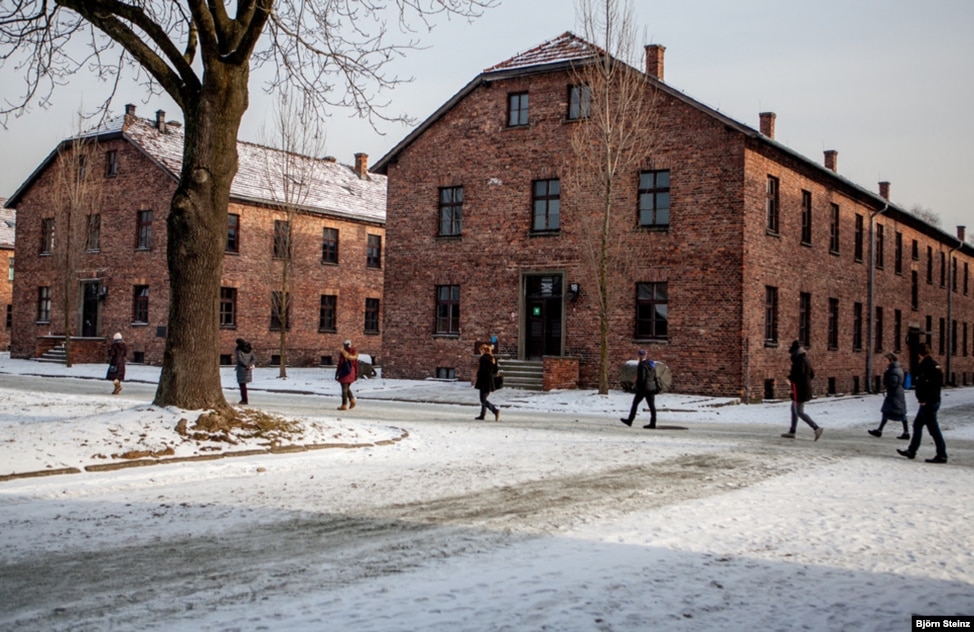
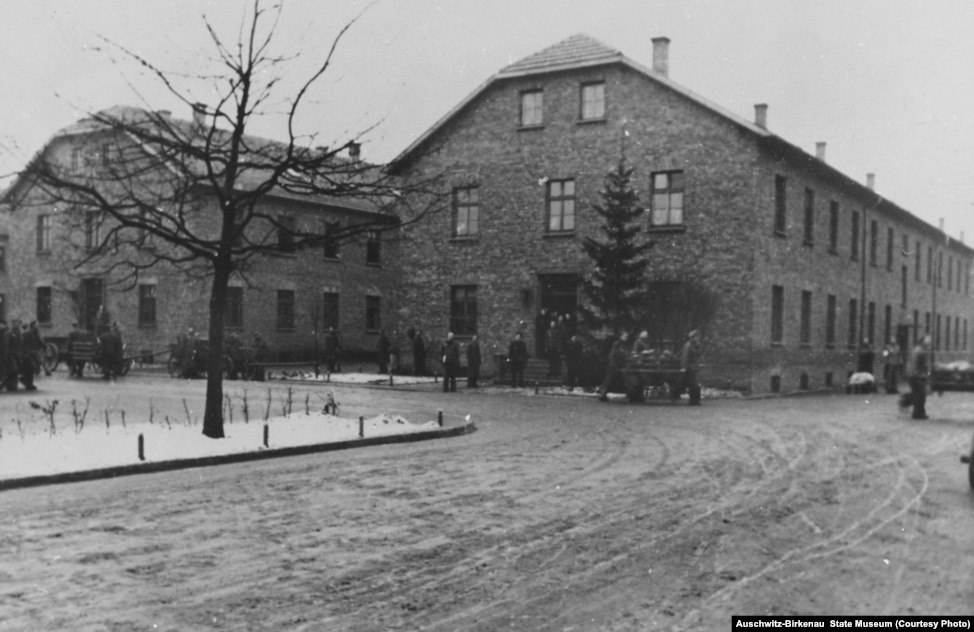
In January 2015, tourists file past Block 15. The Nazis erected a Christmas tree outside it.
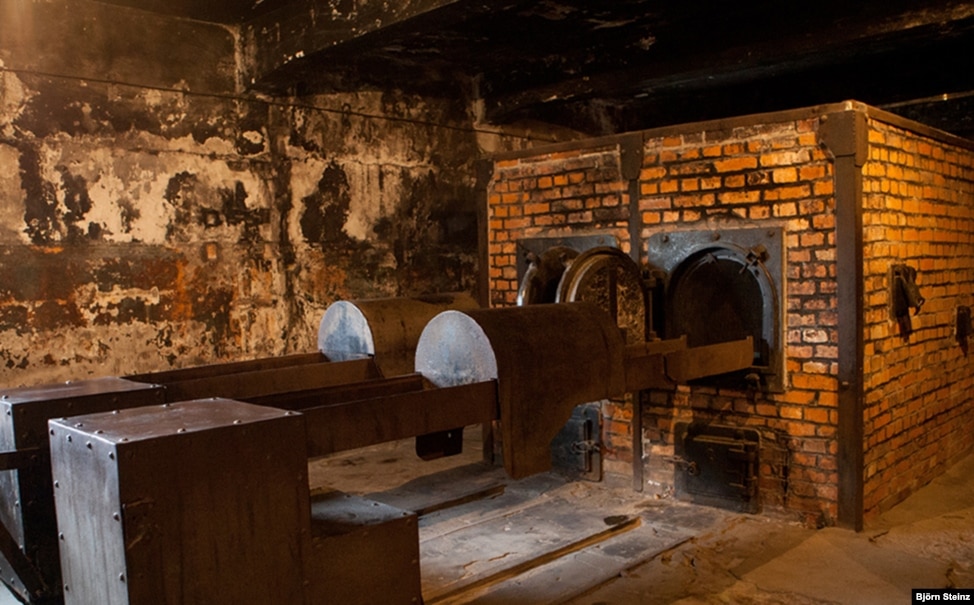

Crematorium I in Auschwitz, one of four used for burning the bodies. Crematoria II and III were destroyed by the SS before the Red Army arrived. Crematorium IV was destroyed in a prisoner revolt in 1944.
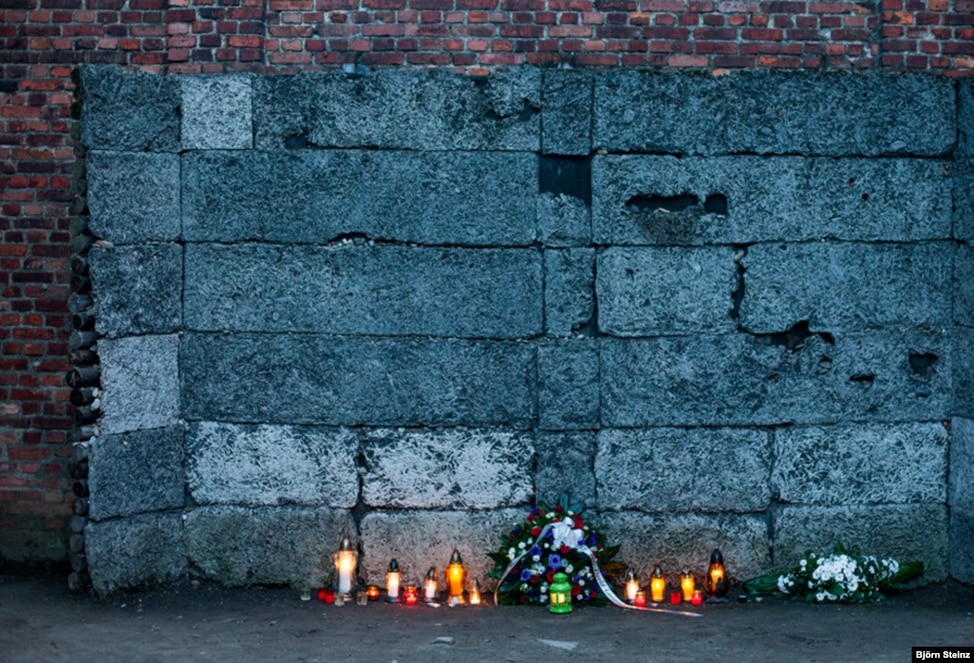

The yard of Block 11 features the “Wall of Death,” where prisoners were shot by firing squad. It was reconstructed after the war. The right-hand picture shows the yard before the reconstruction. Block 11 was a special building used for torture.



